DeFi News
Hackernoon
242
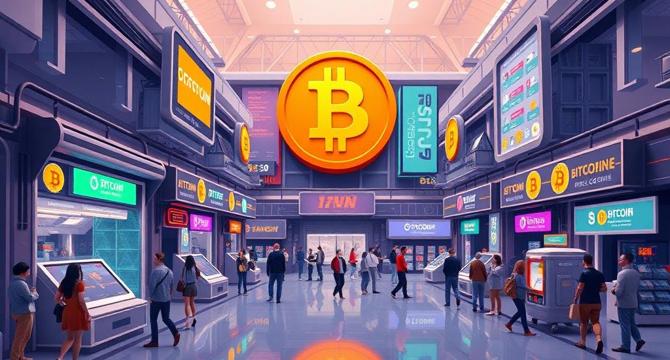
Image Credit: Hackernoon
Centralized vs. Decentralized Crypto Exchanges: A Builder’s Perspective
- Launching a crypto exchange involves complex undertakings in the blockchain space, with practical differences between centralized and decentralized models.
- Centralized exchanges require building extensive technical infrastructure and handling user funds directly, offering tight control over UX and performance.
- Decentralized exchanges execute trades on-chain through smart contracts, reducing liability but demanding solid contract engineering and blockchain limitations.
- Legal compliance for centralized exchanges involves obtaining multiple licenses, while decentralized exchanges may avoid certain regulations by not holding funds or integrating fiat.
- Centralized exchanges pose security risks due to custody of user funds, while decentralized exchanges shift responsibility to users and rely on AMMs or on-chain order books for liquidity.
- CEXs cater to institutional clients and prioritize user support, while DEXs target DeFi users and emphasize global accessibility and censorship resistance.
- CEXs operate as startups-as-banks, requiring licenses and capital, while DEXs function as startups-as-protocols, focusing on tokenomics and community building.
- Choosing between CEX and DEX depends on risk appetite and long-term vision, with both routes offering profitability and global scalability but through different approaches.
- Ultimately, the decision rests on whether you want to build a bank-like infrastructure with CEX or a protocol enabling permissionless trade with DEX, aligning with your mission and risk tolerance.
Read Full Article
14 Likes
Cryptonews
9

Cardano Unleashes “Face Melting Net” to Test AI-Powered DeFi at Full Speed
- Cardano has launched the “Face Melting Net” testnet to test AI-powered DeFi at full speed.
- The testnet, part of Cardano's Leios roadmap, uses AI agents to simulate high-frequency trading and push the protocol's performance limits.
- Leios introduces a concurrent blockchain model with three block types for parallel processing, potentially allowing Cardano to exceed 1,000 transactions per second.
- The goal is to stress-test the protocol under sustained pressure and capture real-world demand data, aiming to enhance Cardano's efficiency without requiring hardware upgrades.
Read Full Article
Like
Medium
18

Image Credit: Medium
The AI Games: Control, Power and the Human Cost
- The monopolization of AI by a few corporations poses serious consequences for access to human rights, personal privacy, and innovation.
- Centralization of AI threatens democratic values and environmental sustainability, highlighting the need for a democratized ecosystem.
- AI, if monopolized, can lead to restricted access similar to healthcare, where the right to essential services is based on economic status.
- Monopolized AI influences various aspects of life, from personal interactions to cultural expression, raising concerns about control and privacy.
- Authoritarian regimes and monopolized AI both control communication, information, and culture, impacting public discourse and expression.
- Monopolies capturing data for profit without public consent restrict individual freedoms and hinder innovation and progress in AI.
- Corporate monopolies control AI development and access, deepening global inequalities and hindering democratization of benefits.
- The suppression of research and control over innovation by monopolies limit progress and sustainability in AI development.
- Monopolized AI contributes to environmental strain and resource depletion, accelerating consumption and impacting sustainability.
- Democratizing AI is crucial to ensure equitable access, protect privacy, foster innovation, and mitigate environmental impact.
Read Full Article
1 Like
Cryptopotato
82
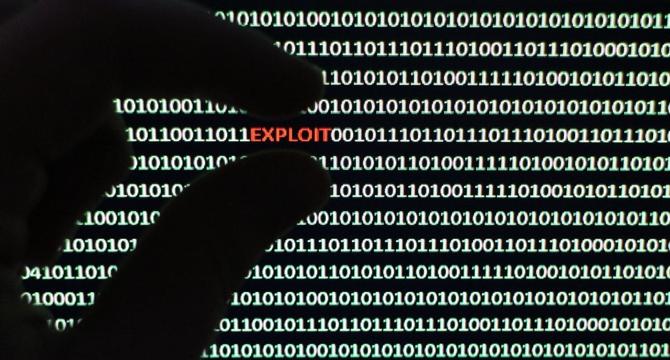
Image Credit: Cryptopotato
Crypto Hacks Surged to $92.5M in April 2025: Immunefi
- Crypto industry faced losses worth $92.5 million from 15 separate hacks in April 2025.
- April's losses increased by 27.3% compared to last year, with a total surpassing 2024's full-year losses.
- Year-to-date crypto hack total reached $1.74 billion, already exceeding 2024's total, marking a significant increase from previous years.
- Exploits continue to be the main cause of losses, with Ethereum and BNB Chain being the most targeted blockchain networks in 2025.
Read Full Article
4 Likes
Dev
247

Image Credit: Dev
Learn More About Drip Tokens: The Future of DeFi and Open-Source Innovation
- Drip tokens are digital assets designed to provide community-based rewards over time, incentivizing long-term holding and engagement within the decentralized finance (DeFi) landscape.
- These tokens offer automated daily rewards, community governance features, and a focus on sustainable yield generation, distinguishing them from traditional cryptocurrencies.
- Utilizing secure digital wallets like MetaMask and Trust Wallet, and engaging with decentralized exchanges such as Uniswap, supports safe trading and storage of drip tokens.
- Key features of drip tokens include automated daily yield distribution, robust smart contract security, and integration with various DeFi protocols within the blockchain ecosystem.
- Applications of drip tokens include passive income generation, community governance through voting mechanisms, and seamless integration with decentralized exchanges for improved liquidity.
- Challenges faced by drip tokens and DeFi in general include technical vulnerabilities, regulatory uncertainty, and the complexity of platforms for new users.
- Future trends in the drip token space include enhanced interoperability, improved security protocols, potential integration with NFTs, and the rise of decentralized autonomous organizations (DAOs).
- Best practices for managing drip tokens include using secure wallets, staying informed about market trends, engaging in community governance, and conducting thorough research before investing.
- Overall, drip tokens represent a significant shift in DeFi, combining daily rewards, security, and community-driven governance to foster innovation and investment opportunities in the open-source ecosystem.
- Ensuring adherence to security practices, understanding regulatory implications, and staying informed about emerging trends are essential for leveraging the potential of drip tokens effectively.
- By following best practices, engaging with the community, and staying updated on innovations, investors and developers can navigate the evolving landscape of drip tokens and DeFi with confidence.
Read Full Article
14 Likes
Dev
343

Image Credit: Dev
Understanding Blockchain: The Mechanics Behind the Revolution
- Blockchain technology is explored in this post, covering core architecture, applications, challenges, and future prospects.
- Key concepts like decentralization, consensus mechanisms, and smart contracts are explained for developers and business leaders.
- Blockchain, originating with Bitcoin, functions as a secure, decentralized digital ledger across a network of computers.
- Consensus mechanisms like Proof of Work and Proof of Stake play vital roles in securing blockchain networks.
- Decentralization eliminates central authorities, enhancing trust and security in transactions.
- Smart contracts automate agreements when specific conditions are met, revolutionizing industries like DeFi and supply chain.
- Blockchain applications span cryptocurrencies, supply chain management, healthcare, voting systems, and IoT integrations.
- Challenges include scalability, energy consumption, regulatory uncertainty, security concerns, and interoperability issues.
- Future innovations involve AI and IoT integration, enhanced interoperability, regulatory frameworks, and open-source funding.
- Institutional adoption, gaming and DeFi applications, and ongoing innovations signal a promising future for blockchain technology.
Read Full Article
20 Likes
Crypto-News-Flash
376
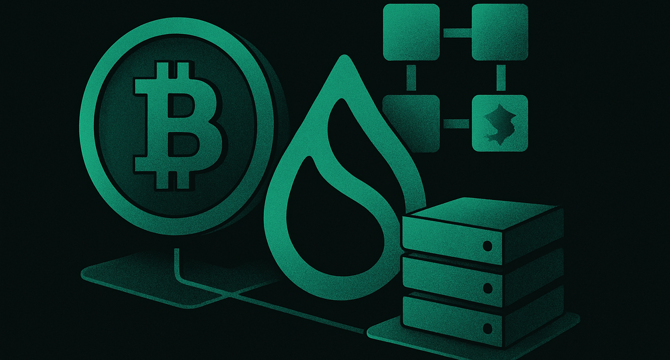
Image Credit: Crypto-News-Flash
Sui Embraces Bitcoin DeFi With sBTC and Stacks Validator Integration
- Sui Foundation integrates sBTC and becomes a validator on Stacks Network, enhancing Bitcoin's decentralized finance accessibility without intermediaries.
- sBTC integration allows Bitcoin holders to access decentralized finance through a one-to-one Bitcoin-backed asset on Sui, leveraging Stacks' decentralized design and high throughput for scalability.
- Bitcoin DeFi sector shows rapid growth, with protocols locking in over $6.5 billion of capital in 2024, leading to Sui's total value locked's 50% surge to $1.8 billion in a month.
- Sui's institutional partnerships, steady increase in stablecoin flows, and strategic collaborations with companies like Grayscale, xPortal, and SatLayer are strengthening its position in the BTCfi ecosystem.
Read Full Article
22 Likes
Dev
27

Image Credit: Dev
Transforming Media with Blockchain Funding: Unlocking Potential
- Blockchain technology is revolutionizing media funding, integrating decentralized systems into the industry for secure distribution and innovative monetization.
- Venture capital, token sales, and new funding strategies are driving blockchain adoption in media, addressing challenges and showcasing success stories like Audius and Brave/BAT.
- Blockchain offers decentralized distribution, innovative monetization models, and intellectual property protection in media, combating piracy and revenue inefficiencies.
- Funding methods like venture capital and token sales empower startups in media, utilizing smart contracts for transparent payments and royalty management.
- Regulatory frameworks, secure content distribution, and monetization are central to blockchain funding in media, transforming revenue streams and advertising models.
- Applications include decentralized streaming platforms like Audius, blockchain-enabled advertising with Brave/BAT, and content platforms like Steemit.
- Benefits of blockchain funding in media include transparency, decentralization, innovation, security, global reach, and seamless technology-creativity integration.
- Challenges such as regulatory uncertainty, market volatility, scalability issues, and cybersecurity threats accompany blockchain funding in media.
- Future outlook predicts increased institutional investment, collaborative ecosystems, advances in tokenization, integration with emerging technologies, and community initiatives.
- Blockchain funding revolutionizes media by introducing transparent, secure, and innovative models, despite facing challenges and uncertainties.
- Embracing blockchain in media funding aligns with the digital era's demands for fair, secure, and efficient content monetization, promising sustainability and creativity.
Read Full Article
1 Like
Bitcoinist
423
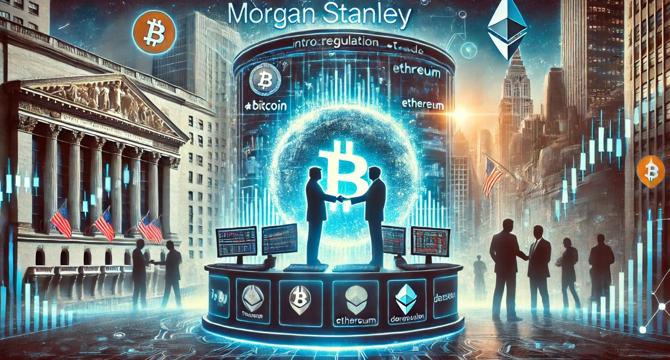
Image Credit: Bitcoinist
Morgan Stanley Introduces Crypto Trading On E*Trade Amid Trump’s Deregulation
- Morgan Stanley plans to introduce cryptocurrency trading on its consumer platform, E*Trade, following recent deregulation efforts led by President Trump.
- E*Trade, acquired by Morgan Stanley in 2020, is currently exploring partnerships to enhance its offerings by allowing direct investments in digital assets.
- This move would position E*Trade competitively against platforms like Robinhood and Coinbase, tapping into the growing market demand for direct crypto trading.
- The shift towards digital assets in traditional finance is bolstered by regulatory changes under Trump's administration, reflecting a broader bullish sentiment in the crypto market.
Read Full Article
25 Likes
TronWeekly
316
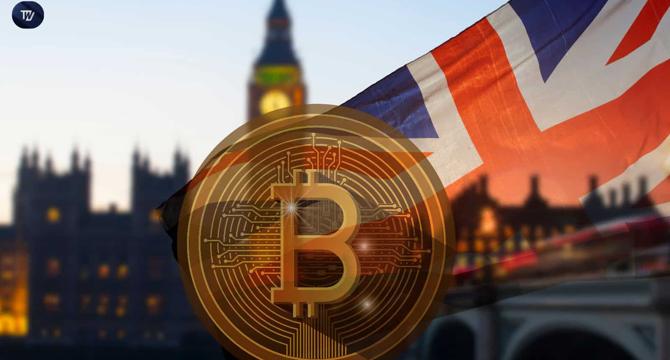
Image Credit: TronWeekly
UK Moves In on Crypto, What the FCA’s Plan Could Mean for the Market
- The UK's Financial Conduct Authority (FCA) is seeking feedback through a public consultation to develop a new regulatory framework for digital assets, including staking and DeFi.
- This initiative aims to bring regulatory clarity and integrity to the evolving crypto market and establish guidelines for key areas such as staking, lending, and DeFi operations.
- The regulatory proposal follows draft legislation from the Treasury to expand FCA oversight in crypto markets, focusing on monitoring stablecoins, exchanges, and decentralized finance platforms.
- The FCA's consultation paper addresses stakeholding, lending, and borrowing rules, seeking feedback to enhance user security and establish regulatory measures for DeFi platforms and crypto intermediaries.
Read Full Article
19 Likes
Changelly
348
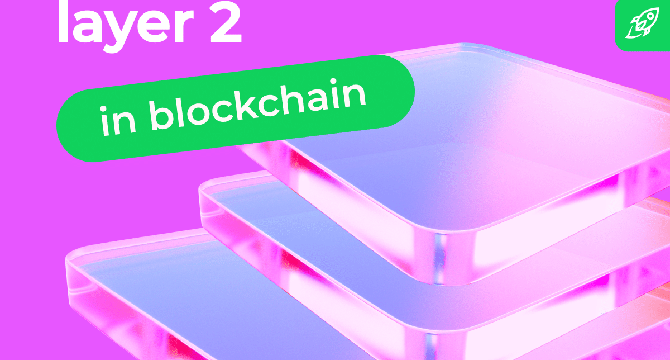
Image Credit: Changelly
What is a Layer-2 (L2) Blockchain Network Solution?
- A Layer-2 (L2) blockchain network is a solution built on top of existing blockchains like Ethereum or Bitcoin to improve speed and reduce costs.
- Layer-2 solutions handle most transaction activities off-chain, enhancing scalability without compromising security.
- Prominent Layer-2 examples include the Lightning Network for Bitcoin and Optimism or Arbitrum for Ethereum.
- The limitations of Layer-1 blockchains like Ethereum and Bitcoin in terms of speed and scalability have led to congestion and high fees.
- Layer-2 solutions, such as rollups and state channels, process transactions off-chain to reduce fees, improve speed, and enhance scalability.
- Different types of Layer-2 solutions include state channels, sidechains, rollups, Plasma, and Validium, each with unique features and benefits.
- Notable Layer-2 networks like Arbitrum, Optimism, and zkSync have significantly improved transaction speeds and costs on Ethereum.
- Layer-2 solutions offer lower fees, faster transactions, and increased utility for DeFi and NFT platforms, making them essential for improving blockchain performance.
- The future of Layer-2 networks involves enhanced interoperability, decentralized sequencers, and major platforms integrating Layer-2 solutions for improved scalability and efficiency.
- Layer-2 networks do not replace Layer-1 blockchains but complement them, offering solutions for scalability limitations and improving overall blockchain performance.
Read Full Article
20 Likes
Bitcoinist
183
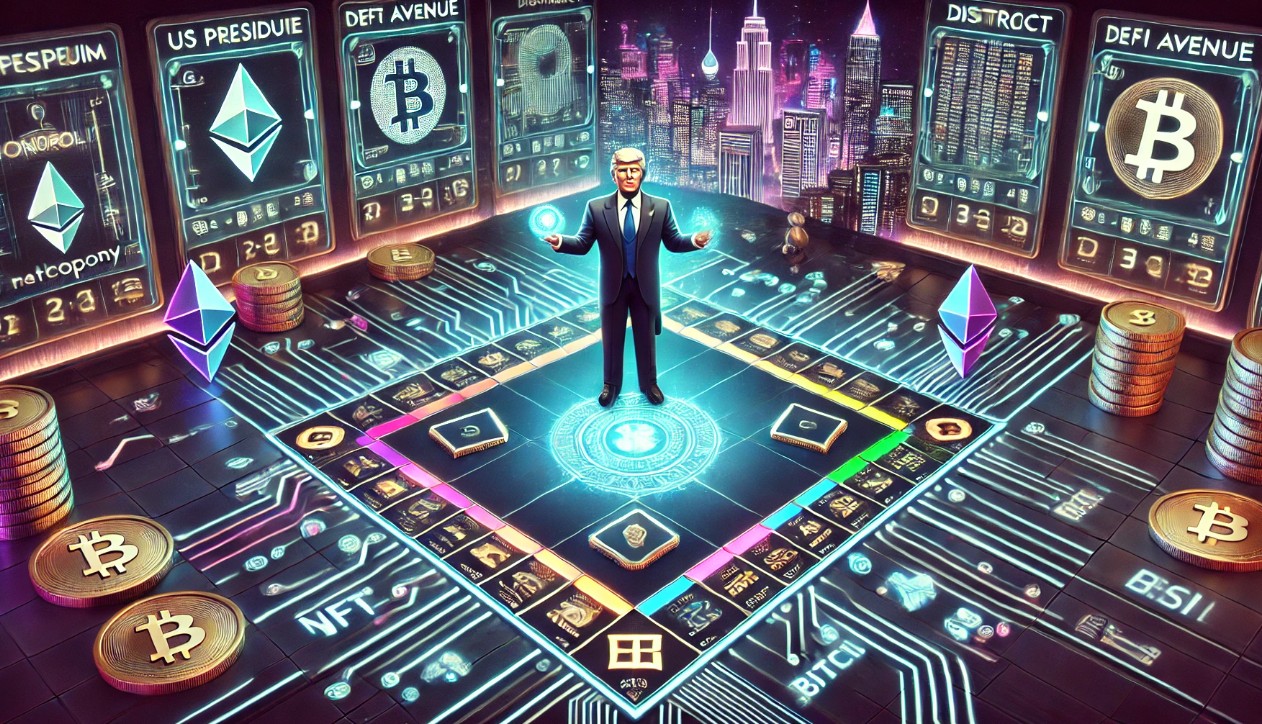
Image Credit: Bitcoinist
Trump’s World Liberty Financial Stablecoin Chosen For $2 Billion Binance Deal
- Abu Dhabi investment firm invests $2 billion in Binance using a stablecoin launched by Donald Trump’s World Liberty Financial venture.
- World Liberty Financial's stablecoin, USD1, backed by US Treasuries, cash, and equivalents, facilitated the investment announcement, marking it as one of the fastest-growing stablecoins in circulation.
- Binance founder Changpeng Zhao met with World Liberty Financial co-founders, including Zach Witkoff, in Abu Dhabi, highlighting their collaboration despite Zhao's past legal issues.
- World Liberty Financial’s USD1 stablecoin is set to be integrated into the Tron blockchain, associated with investor Justin Sun, creating potential conflicts of interest amidst regulatory and legal challenges faced by the Trump family.
Read Full Article
11 Likes
Bitcoinist
238

Image Credit: Bitcoinist
Could XRP ETF Approval Be Near? Ripple To Meet SEC Chair Paul Atkins On May 2
- Speculation is rising about the potential approval of spot XRP ETF applications as positive shifts in cryptocurrency regulation unfold under President Donald Trump’s second administration.
- Speculation is fueled by significant changes at the US Securities and Exchange Commission (SEC), including the appointment of Paul Atkins as the new chair, known for his pro-crypto stance.
- A potential meeting between Ripple Labs’ Chris Larsen and SEC Chair Paul Atkins on May 2 could pave the way for expedited decisions on XRP ETF applications, with a June deadline set by the SEC for one application.
- Renewed optimism for XRP ETF approval follows a more favorable environment for Ripple Labs and the cryptocurrency sector, with expectations also rising for approvals of other crypto ETFs like Litecoin, Solana, Dogecoin, and Cardano later this year.
Read Full Article
14 Likes
Dev
413

Image Credit: Dev
Discovering the Potential of Drip Network: A Deep Dive into DeFi and Sustainable Blockchain Innovation
- Drip Network, a DeFi platform on Binance Smart Chain, is analyzed for its impacts on passive income, community building, and sustainable blockchain practices.
- Key features include unique tokenomics, daily rewards, and a focus on community-driven growth and sustainability.
- Drip Network's token faucet model offers a 1% daily return, fostering sustainable income for users.
- The platform emphasizes community building through referrals, financial inclusion, and financial education initiatives.
- Use cases for Drip Network include passive income generation, community-driven financial platforms, and decentralized banking.
- Challenges include technical complexity, adoption barriers, regulatory uncertainty, market volatility, and scalability concerns.
- Future outlook includes multi-chain integration, enhanced governance, layer-3 solutions, partnerships, and sustainable development focus.
- Drip Network merges sustainable blockchain with community growth, offering unique opportunities for both novice and experienced investors.
- The platform's potential lies in its innovative tokenomics, daily passive income model, and plans for future scalability and governance enhancements.
- Overall, Drip Network reflects the transformative potential of DeFi and modern finance through sustainable practices and community engagement.
- Embrace the decentralized finance future with Drip Network's inclusive and innovative approach to blockchain technologies.
Read Full Article
24 Likes
TronWeekly
179
Image Credit: TronWeekly
Ethena and TON Foundation Partner to Launch USDe Stablecoin Across Telegram Wallets
- Ethena and TON Foundation partnered to introduce stablecoin products USDe and tsUSDe on the Open Network (TON) to enhance access to decentralized finance (DeFi) for over one billion Telegram users.
- tsUSDe is now available on Telegram wallets, offering rewards on up to 10,000 tsUSDe per wallet, with users being able to earn 10% APY in TON plus rewards.
- USDe and tsUSDe are officially deployed on TON, enabling users to use the stablecoins for decentralized lending activities, savings platforms, and other blockchain-based applications.
- The long-term collaboration between Ethena and the TON Foundation aims to explore neobanking, payment integration, DeFi lending, trading interfaces, and potentially introduce a tsUSDe-linked debit card.
Read Full Article
10 Likes
For uninterrupted reading, download the app